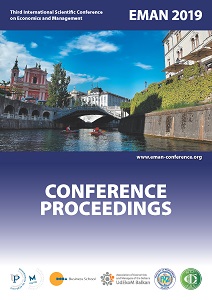REACHED LEVEL OF FINANCIAL INCLUSION IN SELECTED EUROPEAN COUNTRIES
REACHED LEVEL OF FINANCIAL INCLUSION IN SELECTED EUROPEAN COUNTRIES
Author(s): Milka Grbić, Milena Jovanović Kranjec, Natalija Jovanović
Subject(s): Socio-Economic Research
Published by: Udruženje ekonomista i menadžera Balkana
Keywords: financial inclusion;advanced countries in transition;countries of Western Balkans;
Summary/Abstract: Crop production has been always main important sector but relatively small part of the Mongolian economy. As of 2017, agricultural sector produced approximately 11 percent of total GDP, which of agricultural production is more than 80 percent of livestock sector and less than 20 percent of crop production (NSO, 2017). Mongolia has a vast area of territory (18th-largest country in the world). However, of the 80% of the land covered with grassland and pastureland, crops have never been produced on less than 1% of the total land area of Mongolia (FAO, 2014). This study reviews Mongolia’s crop production’ current situation, focusing on Mongolia’s crops supply level, self-sufficient rate and government policy in the future. The results show that Mongolia’ policies for ensuring food supply level will be increased and Mongolia will pay attention to more domestic production. Mongolia’s crops self-sufficiency rate is 80 percent of flour and flour products, 107.7 percent of potato, 33.2 percent of vegetables and 0.7 percent of fruits and berries. By 2020, flour and flour products self-sufficiency rate are likely to increase to 100 percent, vegetables to 79 percent and fruits to 7.8 percent with associated government policy. However, fruits are still reliance on import.Generally accepted viewpoint is that for the realization of economic growth and decrease of poverty, among other things, the inclusion of individuals in the formal financial flows is necessary. The concept of financial inclusion, as the subject of paper research, is being considered at the example of the selected European countries out of which some have successfully finished transition process and have become the members of European Union (advanced countries in transition), while a number of them is on the road of European integrations (the countries of Western Balkans). In accordance with the subject, the objective of the paper is to carry out comparative analysis of the reached level of financial inclusion of individuals in advanced countries and the countries of Western Balkans. Paying respect to the complexity of the stated problem, the qualitative methodology is applied, based on the dominant application of the methods of analytical description and methods of comparative analysis. In the paper it is concluded that the average values of selected indicators of financial inclusion of the individuals in the case of Western Balkans countries are significantly lower in comparison to the advanced countries in transition. In the context of the measures of economic policy and the elements of development strategies it is necessary to provide the conditions for the increase of financial inclusion, primarily in the countries of Western Balkans. Regarding this, what is necessary, among other things, is financial education for the purpose of improvement of financial literacy of population, implementation of new technologies of mobile banking and electronic payment, designing of financial products that meet the needs of clients and provision of financial services at prices that individuals can afford.
Book: EMAN 2019 / 3 – Economics & Management: How to Cope with Disrupted Times - CONFERENCE PROCEEDINGS
- Page Range: 459-464
- Page Count: 6
- Publication Year: 2019
- Language: English
- Content File-PDF

